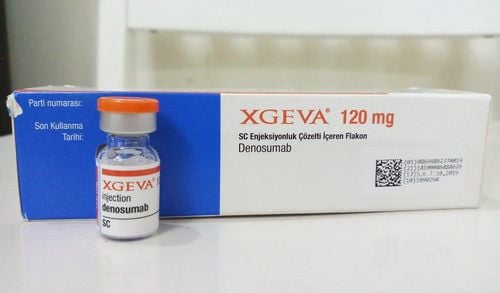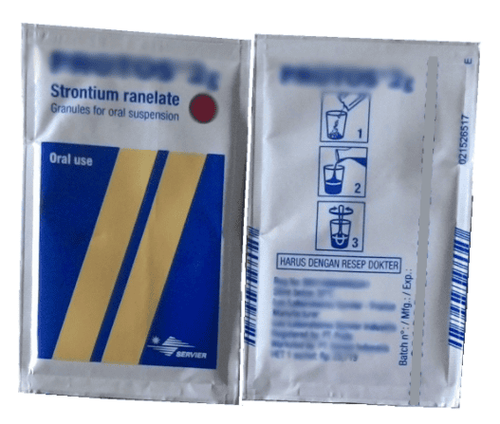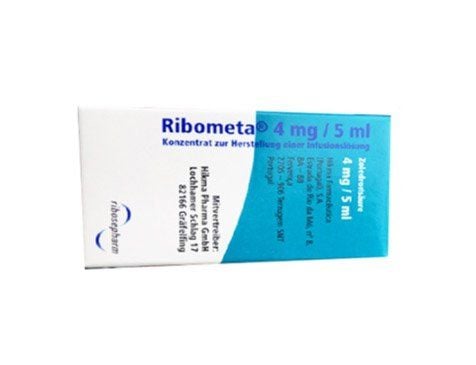This is an automatically translated article.
Osteosarcoma is the term for a type of bone cancer. It occurs when bone-growing progenitor cells divide out of control and form a tumor. Anyone can get bone cancer, but it is the most common cancer in children and adolescents, especially teenage boys. Treatment of bone cancer is multimodal therapy, combining chemotherapy, radiation and surgery.
1. What is Osteosarcoma?
Sarcoma refers to any cancer of the muscles, bones, or connective tissues such as tendons or cartilage. There are different subtypes of sarcoma. They are classified based on where they appear in the body and how they look under the microscope. Sarcoma can start in almost any part of the body. So what is osteosarcoma of bone?
Osteosarcoma comes from 2 words osteo, meaning “of bone” and sarcoma, a general type of cancer as described above. The most common sites of osteosarcoma are in the long bones of the legs and arms. Normal cells called progenitor cells will turn into fully developed fibrous tissue, cartilage or bone over time. But if these cells begin to multiply and divide abnormally, they can cause tumors. Bone cancer forms if normal bone cells begin to divide abnormally and form a tumor.
2. What causes bone cancer?
Malignant bone cancer is a rare type of cancer. There are about 750-900 new cases diagnosed each year in the United States. It is the most common tumor arising from bone in children and adolescents, accounting for about 60% of bone tumors in this age group. The disease occurs most often in early adolescence and in people 65 years of age and older. Gender, race, or geography are not risk factors for bone cancer. If you have had chemotherapy or radiation therapy for another cancer before, you may be at increased risk of bone malignancy. Osteosarcoma is the most common secondary cancer (meaning caused by previous treatment) occurring within the first 20 years after radiation therapy for solid organ cancer. Certain genetic conditions including hereditary retinoblastoma, Li-Fraumeni syndrome, and Rothmund-Thomson syndrome may increase the risk of bone cancer. Having a benign bone disease such as Paget's disease is also a risk factor for older patients to develop osteosarcoma.
3. How is bone cancer diagnosed?
Most people diagnosed with bone cancer have symptoms of bone pain. The process of diagnosing bone cancer usually includes a history and physical examination, and blood tests to rule out other causes of pain. You may be ordered by your doctor to perform an imaging test, usually an X-ray, or an MRI scan. A chest CT scan or whole-body PET/CT is used to see if the tumor has spread beyond the primary site to other areas of the body. A biopsy is needed to diagnose bone cancer. Often, an image-guided needle biopsy may be used. However, in some cases the surgeon may have to do a biopsy to remove part of the tumor. A biopsy will help confirm a diagnosis of bone cancer and provide information about the grade of the tumor.
4. Progression of malignant bone cancer
Most tumor types are classified using a classification system developed by experts. This is difficult to do with osteosarcomas because of the different types and locations. The most widely used system has been developed by the American Joint Committee on Osteoarthritis (AJCC). Systemic combination of tumor size, histological grade (the difference between cells under the microscope when compared to normal cells) and metastasis to lymph nodes or other sites on the body able to determine the stage. Stage T represents the extent of the primary tumor itself. Stage N represents the extent of lymph node involvement. Stage M represents whether or not the cancer has spread to distant parts of the body. The osteosarcoma classification also includes the histological grade, “G”, which describes what the cells look like under the microscope. “G” is determined by three different factors, cell differentiation, mitotic count, and tumor necrosis. The T, N, M, and G ratings are combined to designate a stage, from I (mildest) to IV (end-stage osteosarcoma).
This classification system is very complex. Although complex, the staging system helps doctors determine how far the cancer has spread and from there make treatment decisions for patients. The stage of the cancer or the extent of the disease is based on information gathered through various tests performed when making a cancer diagnosis.
5. How is bone cancer treated?
The patient should be treated in an oncology hospital. Treatment of bone cancer requires complex multimodality therapy (surgery, radiation, and chemotherapy). Specific treatment depends on the size, location of the tumor, the extent of the tumor, and whether it has metastasized.
5.1 Surgery Previously, patients with bone cancer were treated with surgery alone. Studies have shown that patients treated with surgery alone are more likely to have recurrences in other areas of the body. Usually, tumors are surgically removed by an oncologist or orthopedist. The goal of surgery is to remove all of the cancer cells. However, planning for surgery must also consider how it will affect your ability to walk every day. The extent of surgery for osteosarcoma will depend on several factors, such as the location and size of the tumor. Some of the surgical therapies used to treat bone cancer include:
Surgery to remove only the tumor and preserve the limb: Most osteosarcoma surgery can be done in a way that removes all cancerous tumors and preserve the limbs so that they can maintain function. If part of the bone is removed, the surgeon will reconstruct the bone. The method of reconstruction depends on your specific condition, but options include a metal prosthetic or bone graft. Surgery to remove the affected limb (amputation): With advances in limb-conserving surgery, the need for amputation, which involves removing a limb or part of a limb, has greatly decreased over the years. If amputation is necessary, advances in prosthetics can significantly improve a patient's motor function. Lower leg amputation: This type of surgery is sometimes used for children who are still growing. In this type of surgery, the surgeon removes the tumor and the surrounding area, including the knee joint. The foot and ankle are then rotated and the ankle functions as a knee. The doctor will use prostheses for the lower leg and foot. The results usually help the patient perform very well in exercise, sports and daily activities. 5.2 Chemotherapy To help reduce the risk of recurrence, chemotherapy and radiation therapy are also used in the treatment of bone cancer. Patients are often treated with an intensive combination of multiple chemotherapeutic agents. A common chemotherapy regimen is methotrexate, doxorubicin and cisplatin or “MAP” chemotherapy. Other chemotherapy drugs that may be used in the treatment of osteosarcoma include ifosfamide, gemcitabine, cyclophosphamide, etoposide, and carboplatin. Targeted therapies including regorafenib, sorafenib, and everolimus may also be used in the treatment of recurrent or metastatic bone cancer.
Chemotherapy often combines two or more different drugs and can be given as an intravenous (IV) infusion, as a pill, or through both. For osteosarcoma, chemotherapy is usually recommended before surgery. Doctors monitor how cancer cells respond to chemotherapy to plan further treatment. If the osteosarcoma shrinks in response to chemotherapy, it may make surgery easier. If a bone tumor does not respond to chemotherapy, it may indicate that the tumor is very advanced. Doctors may recommend a combination of different chemotherapy drugs or a more aggressive surgery to make sure all of the tumor can be removed. Chemotherapy may also be used after surgery to kill any remaining cancer cells.
5.3 Radiation Therapy Radiation therapy is therapy that uses high-energy beams, such as X-rays and protons, to kill cancer cells. Radiation may be an option in certain cases, such as when surgery is not possible or if the surgeon cannot remove all of the cancer during surgery. During radiation therapy, beams of energy are delivered from a machine that moves around you as you lie on a table. The beams are carefully directed to the area of the bone tumor to reduce the risk of damaging surrounding healthy cells.
In summary, bone cancer is a dangerous disease, often occurring in children and adolescents. Therefore, parents need to pay attention to unusual symptoms such as unexplained persistent bone pain. When having the above signs, parents need to take their children to specialized medical facilities for timely diagnosis and treatment.
Vinmec International General Hospital is one of the hospitals that not only ensures professional quality with a team of leading medical doctors, modern equipment and technology, but also stands out for its examination and consultation services. comprehensive and professional medical consultation and treatment; civilized, polite, safe and sterile medical examination and treatment space.
Please dial HOTLINE for more information or register for an appointment HERE. Download MyVinmec app to make appointments faster and to manage your bookings easily.













